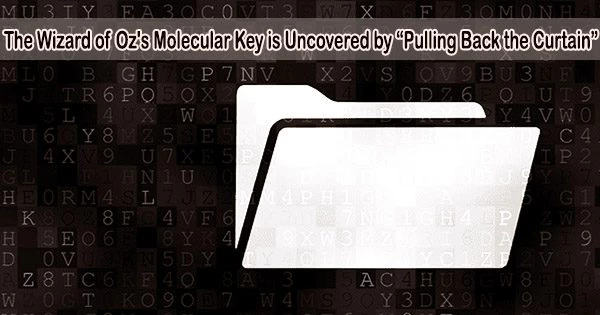Encrypting files using digital keys has become more popular as people and businesses worry about important data being stolen.
Researchers have now created a robust molecular encryption key using sequence-defined polymers that are formed and disassembled sequentially, as reported in ACS Central Science. They buried their molecular key in a letter’s ink, mailed it, and used it to unlock a file containing The Wonderful Wizard of Oz’s text.
Encryption techniques are used to jumble up the information and only expose it when the right code or digital encryption key is employed in order to securely share data. Researchers have been working on molecular methods to transfer and store encryption keys across long distances, including DNA chains and polymers.
Currently, nucleic acids store more information than polymers. The problem with polymers is that as they become longer, the efficiency of storing more data with each successive monomer decreases, making it very challenging to extract the information they’re hiding using analytical tools.
Recently, Eric Anslyn and colleagues developed a method to deconstruct polymers in a sequential way, allowing their structures to be determined more easily with liquid chromatography-mass spectrometry (LC/MS). So, Anslyn, James Ruether, and others wanted to test the method on a mixture of unique polymers hidden in ink to see if the approach could be used to reveal a complex molecular encryption key.
First, the researchers created a binary key of 256 characters that could be used in an algorithm to encrypt and decrypt text files. The key was then encoded into polymer sequences of eight oligourethanes that were each 10 monomers long.
The two ends served as stand-ins for synthesis and decoding, and only the center eight monomers contained the key. Each sequence contained a distinct, isotopically tagged “fingerprint” monomer that served as the decoding placeholder, indicating where each polymer’s stored information fit in relation to the final digital key’s ordering. The original structures and the digital key were later discovered by combining the eight polymers, sequential depolymerization, and LC/MS.
Finally, one team of researchers created an ink by combining the polymers with isopropanol, glycerol, and soot. They then utilized this ink to write letters to other team members who were unaware of the encoded information.
These researchers successfully reconstructed the binary key after removing the ink from the paper and using the same sequential analysis. They entered the encryption key into the algorithm, revealing a plain text file of The Wonderful Wizard of Oz.
According to the researchers, their findings show that molecular information encryption using sequence-defined polymer mixes is reliable enough for practical uses like concealing secret messages in written correspondence and plastic products.
The authors acknowledge funding from the Army Research Office, the Howard Hughes Medical Institute, the Keck Foundation, and the Welch Reagents Chair.





